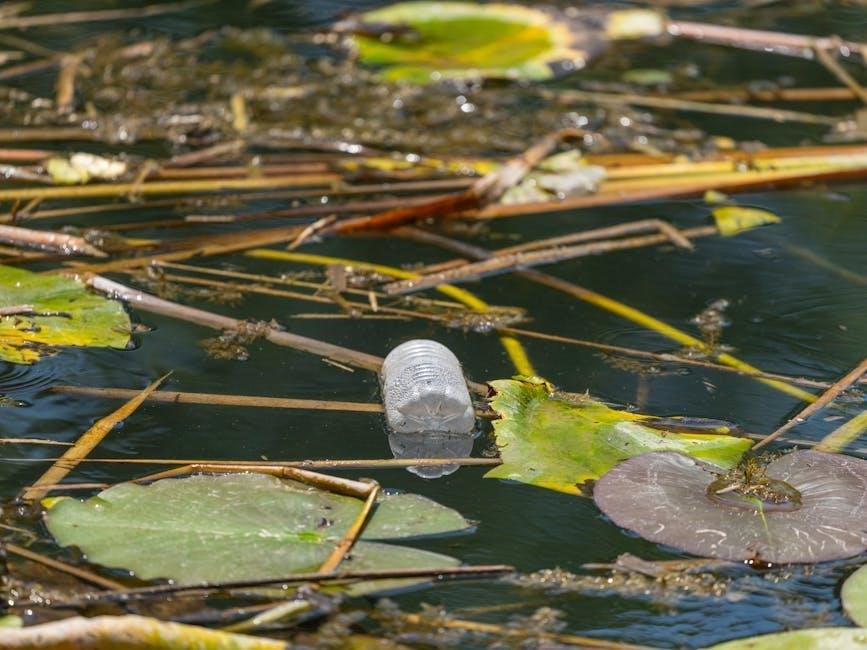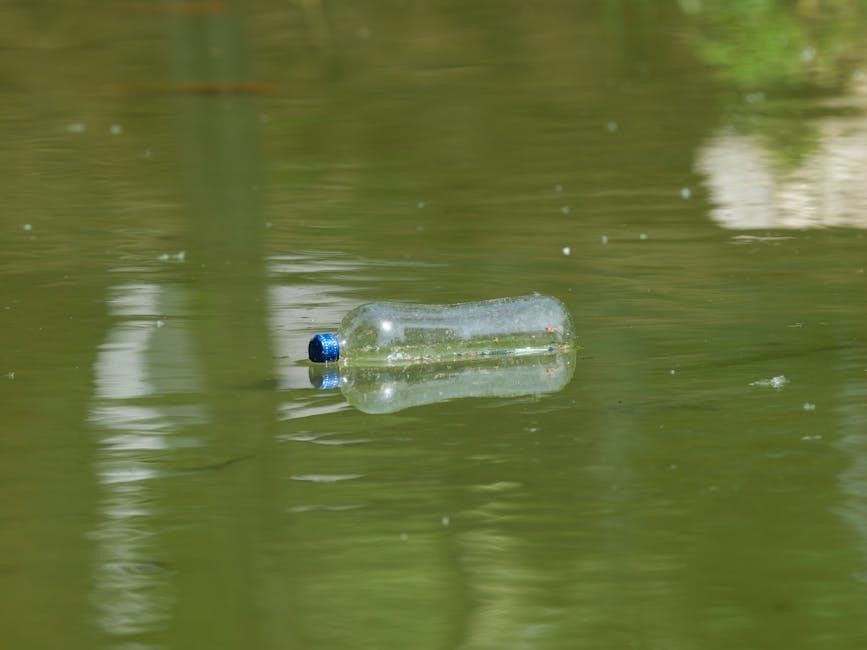The Dirty Dozen and Clean Fifteen are terms popularized by the Environmental Working Group (EWG) through their annual Shoppers Guide to Pesticides in Produce. These lists rank fruits and vegetables based on pesticide contamination levels, helping consumers make informed choices to reduce exposure to harmful chemicals in their diet.
Overview of the Clean 15 and Dirty Dozen Lists
The Clean Fifteen and Dirty Dozen lists, published annually by the Environmental Working Group (EWG), provide consumers with essential insights into pesticide contamination in produce. These rankings are based on extensive testing of fruits and vegetables, highlighting which items are most and least likely to contain pesticide residues. The Dirty Dozen identifies produce with the highest pesticide levels, encouraging consumers to opt for organic options when possible. Conversely, the Clean Fifteen showcases produce with minimal pesticide exposure, offering a safer choice for conventional purchases. By understanding these lists, shoppers can make informed decisions to reduce their exposure to harmful chemicals while maintaining a balanced diet.

Importance of Understanding Pesticide Contamination in Produce
Understanding pesticide contamination in produce is crucial for making informed decisions about the food we eat. Pesticide residues on fruits and vegetables can pose health risks, particularly for vulnerable populations like children, pregnant individuals, and those with compromised immune systems. The Dirty Dozen and Clean Fifteen lists serve as valuable tools, helping consumers identify which produce items are more likely to contain higher levels of pesticides. By prioritizing organic options for the Dirty Dozen and selecting conventional produce from the Clean Fifteen, individuals can significantly reduce their exposure to harmful chemicals. This awareness not only protects personal health but also supports sustainable farming practices that minimize environmental impact.

The Dirty Dozen: Produce with the Highest Pesticide Contamination
The Dirty Dozen highlights fruits and vegetables with the highest pesticide residues, such as spinach, strawberries, and apples. Understanding this list helps consumers prioritize organic options to minimize health risks.
Spinach: Top of the Dirty Dozen List
Spinach consistently ranks as the most contaminated produce on the Dirty Dozen list due to high levels of pesticide residues. Studies reveal that conventional spinach retains significant amounts of neurotoxic insecticides, posing health risks. The leafy green’s soft texture and large surface area make it prone to pesticide accumulation. Regular consumption of non-organic spinach may expose consumers to harmful chemicals linked to neurological damage and other health issues. To mitigate risks, choosing organic spinach is highly recommended, as it contains virtually no detectable pesticide residues. This makes organic spinach a safer and healthier option for daily consumption.
Strawberries: High Pesticide Residue
Strawberries rank second on the Dirty Dozen list, with alarming levels of pesticide contamination. According to the EWG, a single strawberry sample may contain residues from over 10 different pesticides. The thin skin and delicate nature of strawberries make them highly susceptible to pesticide absorption. Conventionally grown strawberries often retain these chemicals even after washing, posing potential health risks. Organic strawberries, however, consistently show significantly lower pesticide levels. Consumers are advised to prioritize organic options for this fruit to minimize exposure. The high pesticide residue in strawberries underscores the importance of making informed choices to protect long-term health and reduce the intake of harmful chemicals.
Kale, Collard & Mustard Greens: Leafy Greens with Pesticides
Kale, collard greens, and mustard greens are among the most contaminated leafy greens, ranking third on the Dirty Dozen list. These vegetables often contain residues of multiple pesticides, including Dacthal and chlorpyrifos, which are linked to potential health risks. Their leafy texture and large surface area make them prone to retaining pesticides, even after washing. The EWG’s analysis reveals that conventionally grown samples frequently test positive for these chemicals. Organic options, however, significantly reduce pesticide exposure. While these greens are highly nutritious, their contamination levels highlight the importance of choosing organic to minimize health risks. Consumers are encouraged to prioritize organic versions to enjoy their nutritional benefits without the pesticide burden.
Pears: Pesticide Exposure in Popular Fruit
Pears are a popular fruit that rank fourth on the Dirty Dozen list due to their high pesticide exposure. Common pesticides found on pears include chlorpyrifos and boscalid, which have been linked to potential health risks. The thin skin of pears makes it difficult to remove pesticide residues through washing alone. This makes choosing organic pears a better option to minimize exposure to these harmful chemicals. Despite their nutritional benefits, including high fiber and antioxidants, the pesticide contamination underscores the importance of selecting organic varieties to reap the health rewards without the associated risks.
Apples: Common Fruit with Pesticide Residue
Apples are one of the most commonly consumed fruits and rank fifth on the Dirty Dozen list due to high pesticide residue. Testing has revealed that apples often contain residues of pesticides like chlorpyrifos and difenoconazole, which can persist even after washing. This is concerning for frequent consumers, especially children and pregnant individuals. The thin skin of apples makes it difficult to remove contaminants, raising health concerns. While apples are nutritious, offering antioxidants and fiber, their pesticide exposure highlights the importance of choosing organic options when possible. Organic apples significantly reduce pesticide intake, making them a safer choice for regular consumption.

Blackberries: Berries with High Pesticide Levels
Blackberries are among the berries with high pesticide levels, earning them a spot on the Dirty Dozen list. Testing has shown that blackberries often contain residues of pesticides such as pyraclostrobin and flonicamid, which are used to control fungi and pests. These chemicals can linger on the fruit even after washing, posing potential health risks. Blackberries are particularly vulnerable due to their delicate skin and dense surface area, which can trap pesticide residues. While blackberries are rich in antioxidants and vitamins, their pesticide exposure makes organic options a safer choice for consumers. Regular consumption of non-organic blackberries may lead to cumulative pesticide intake, highlighting the importance of awareness and informed shopping decisions.
The Clean Fifteen: Produce with the Lowest Pesticide Contamination
The Clean Fifteen highlights fruits and vegetables with minimal pesticide residues, as identified by the EWG’s annual guide. Examples include avocados, sweet corn, and pineapple.
Avocados: Lowest Pesticide Levels
Avocados consistently rank as one of the cleanest produce items, with minimal pesticide residue. According to the EWG’s analysis, fewer than 2% of avocado samples contain detectable pesticides. This is largely due to their thick skin, which protects the edible flesh from pesticide exposure. Avocados are an excellent choice for consumers who prefer conventional produce, as they are highly unlikely to contain harmful contaminants. Their low pesticide levels make them a standout in the Clean Fifteen list, providing a healthy and safe option for daily consumption. This makes avocados a great addition to diets seeking to minimize chemical exposure while enjoying nutrient-rich fruits.
Sweet Corn: Minimal Pesticide Exposure
Sweet corn is another standout in the Clean Fifteen list, known for its minimal pesticide exposure. According to the EWG’s findings, over 90% of sweet corn samples had no detectable pesticide residues. This is attributed to the natural protection provided by the corn husk, which shields the edible kernels from pesticides. Additionally, sweet corn is often grown with fewer chemicals compared to other crops. Consumers can confidently choose conventional sweet corn, as the risk of pesticide contamination is extremely low. This makes it an excellent, affordable option for families and individuals seeking to reduce their pesticide intake without compromising on nutrition or taste.

Pineapple: Tropical Fruit with Low Pesticides
Pineapple ranks high in the Clean Fifteen list due to its exceptionally low pesticide contamination. The Environmental Working Group (EWG) reports that over 90% of pineapple samples tested had no detectable residues, making it one of the cleanest fruits available. This is largely due to pineapple’s thick, protective skin, which prevents pesticides from penetrating to the edible flesh. Additionally, pineapples are often grown with fewer chemicals, further reducing exposure. For consumers, this means choosing conventional pineapple is both safe and cost-effective. With its tropical flavor and numerous health benefits, pineapple is a nutritious and pesticide-free choice for snacks, smoothies, and meals. Its inclusion in the Clean Fifteen underscores its safety and accessibility for all.
Onions: Bulb Vegetables with Few Pesticides
Onions are a standout in the Clean Fifteen list, known for their minimal pesticide exposure. The Environmental Working Group (EWG) consistently ranks onions as one of the cleanest produce options, with pesticide residues detected in fewer than 10% of samples. This is attributed to their protective, layered skin, which shields the edible part from pesticide absorption. Additionally, onions are often grown with fewer chemicals, reducing contamination risks. For consumers, this means conventional onions are both safe and budget-friendly. Onions are versatile, adding flavor to a wide range of dishes, and they are rich in antioxidants and fiber. Their inclusion in the Clean Fifteen makes them an accessible and healthy choice for everyday meals, with no need to opt for organic versions to ensure safety.

Papaya: Exotic Fruit with Low Contamination

Papayas are a tropical fruit that ranks high in the Clean Fifteen list due to their low pesticide contamination levels. According to the EWG, fewer than 5% of papaya samples show detectable pesticide residues, making them a safe choice for consumers. This low contamination is partly due to their thick, protective skin, which minimizes pesticide absorption. Papayas are also often grown with fewer chemicals compared to other fruits. They are a nutrient-rich option, providing vitamins A and C, potassium, and fiber. Their inclusion in the Clean Fifteen makes conventional papayas a cost-effective and healthy choice. This fruit is versatile, enjoyed fresh, in smoothies, or as a topping for various dishes, offering both flavor and nutritional benefits without the need for organic selection.

How to Use the Clean 15 and Dirty Dozen Lists
The Clean 15 and Dirty Dozen lists guide consumers on produce pesticide levels, helping them decide when to buy organic or opt for conventional options;

When to Choose Organic: Dirty Dozen
Choosing organic produce for items on the Dirty Dozen list is crucial to minimize pesticide exposure. These fruits and vegetables tend to have higher residue levels, even after washing. Organic farming avoids synthetic pesticides, reducing contamination risks significantly. Prioritize buying organic for strawberries, spinach, and kale, as they top the Dirty Dozen. This simple switch can lower overall pesticide intake and support environmentally friendly farming practices. Always refer to the Clean 15 and Dirty Dozen guide for updated rankings to make informed decisions at the grocery store. By selecting organic for high-risk produce, consumers can enjoy cleaner, healthier food while promoting sustainable agriculture.
When Conventional Produce is Safe: Clean Fifteen
For the Clean Fifteen, conventional produce is generally safe to consume due to low pesticide residue levels. These fruits and vegetables are less likely to retain contaminants, making them a cost-effective and healthy choice. Avocados, sweet corn, and pineapple top the list, with minimal pesticide exposure. Even when grown conventionally, these items typically have negligible residue, reducing the need to opt for organic. This categorization helps consumers make practical decisions, ensuring access to nutritious food without unnecessary expense. Always check the updated Clean 15 list to identify produce where conventional options are suitable. This approach balances health, budget, and sustainability, supported by the EWG’s annual rankings.

Environmental Working Group (EWG) and Their Role
The EWG specializes in researching pesticide contamination in produce, creating annual guides to help consumers make informed choices. Their work promotes transparency and healthier eating habits.
EWG’s Annual Shoppers Guide to Pesticides in Produce
The Environmental Working Group (EWG) publishes an annual guide ranking fruits and vegetables by pesticide contamination levels. Based on USDA data, the guide categorizes produce into the Clean 15 and Dirty Dozen lists. It helps consumers make informed decisions about when to choose organic or conventional options to reduce pesticide exposure. The guide highlights produce with the highest and lowest pesticide residues, providing a quick reference for shoppers. Updated yearly, it reflects the latest testing results, ensuring consumers have current information to make healthier choices. This resource empowers individuals to prioritize their budgets and preferences while minimizing pesticide intake, promoting better health and environmental awareness.
How the Rankings Are Determined
The rankings for the Clean 15 and Dirty Dozen are determined by the Environmental Working Group (EWG) through a comprehensive analysis of pesticide residue data from the U.S. Department of Agriculture (USDA). The EWG evaluates over 100,000 samples of produce, testing for more than 200 pesticides. The rankings are based on factors such as the percentage of samples with detectable pesticides, the average amount of pesticides per sample, and the number of different pesticides found. Produce with higher pesticide residues and more frequent detection earns a spot on the Dirty Dozen, while those with lower residues and fewer detections are placed on the Clean 15. This rigorous process ensures consumers have clear guidance on reducing pesticide exposure.
Health Implications and Consumer Awareness
Pesticide exposure is linked to health risks like neurological damage and cancer. Awareness of the Clean 15 and Dirty Dozen helps consumers make informed choices to reduce pesticide intake.
Reducing Pesticide Exposure for Better Health
Reducing pesticide exposure is crucial for long-term health, as even low levels of pesticides have been linked to neurological, developmental, and reproductive issues. Prioritizing organic options for the Dirty Dozen and opting for conventional produce from the Clean Fifteen can significantly lower pesticide intake. Simple practices like washing fruits and vegetables thoroughly, even those with peels, can further reduce residue. Additionally, supporting local and seasonal produce may limit exposure, as these items often have lower pesticide levels. By making informed choices, consumers can protect themselves and their families from potential health risks associated with pesticide consumption, promoting overall well-being and safety.
Consumer Guide to Making Informed Choices
Empowering consumers to make informed decisions about their produce is essential for reducing pesticide exposure. By referencing the Clean 15 and Dirty Dozen lists, shoppers can prioritize organic options for items with high pesticide contamination and opt for conventional produce when pesticide levels are minimal. This approach helps balance health, budget, and convenience. Consumers are encouraged to download the EWG’s annual guide for easy access to updated rankings. Additionally, washing produce thoroughly, even for items with peels, can further reduce pesticide residue. By integrating these strategies, individuals can make healthier, more informed choices, ensuring safer food options for themselves and their families while supporting sustainable farming practices.
